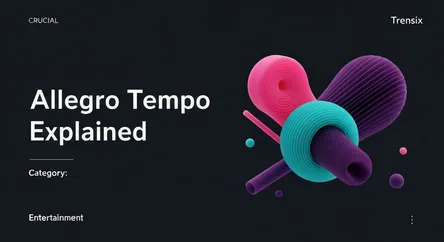Entertainment
Allegro Tempo Explained

Discover Allegro, the lively and fast tempo in music. Learn what this Italian term means and how it brings energy and excitement to compositions.
What is it?
Allegro is an Italian musical term used as a tempo marking, instructing musicians to perform a piece in a fast, quick, and bright manner. Translating literally to "cheerful" or "joyful," it's one of the most frequently used tempo indications in classical music, typically corresponding to 120–156 beats per minute (BPM). Composers use variations like Allegro moderato (moderately fast) or Allegro con brio (fast with brilliance) to provide more nuanced direction.
Why is it trending?
While a centuries-old term, Allegro remains relevant due to its foundational role in music education and performance. Its presence is renewed through viral classical pieces on social media platforms, its use in dramatic film scores, and its frequent mention in music theory discussions. As new generations explore classical music, often through popular media like TV shows and video games, fundamental concepts like Allegro see a constant resurgence in search interest from aspiring musicians and curious listeners alike.
How does it affect people?
The fast pace of an Allegro movement has a direct psychological and physiological effect on the listener. It often evokes feelings of excitement, joy, urgency, or triumph. The brisk tempo can increase heart rate and create a sense of energy, making it a powerful tool for composers to build tension or express celebration. For audiences, it provides a thrilling and emotionally uplifting experience, while for performers, it represents a test of technical agility and precision.